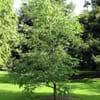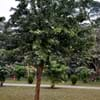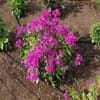Life Span
Perennial
Perennial
Origin
Asia, Europe, North America
Europe, Northern Africa, Western Asia
Types
Black Ash, Blue Ash, California Ash, Carolina Ash, European Ash
A. campestre var. campestre - downy fruit
A. campestre var. leiocarpum (Opiz) Wallr. (syn. A. campestre subsp. leiocarpum) - hairless fruit
Habitat
Forest edges, Hillside, Woods
Forest margins, gardens, Suburban areas, Woods
USDA Hardiness Zone
3-9
5-8
Sunset Zone
9, 12, 13, 14, 15, 16, 17, 18, 19, 20, 21, 22, 23, 24
2a, 2b, 3a, 3b, 4, 5, 6, 7, 8, 9, 14, 15, 16, 17
Habit
Oval or Rounded
Oval or Rounded
Flower Color
White
Green, Light Yellow
Flower Color Modifier
Not Available
Bicolor
Fruit Color
Not Available
Light Yellow, Light Pink, Light Green, Tan
Leaf Color in Spring
Dark Green
Green, Light Green
Leaf Color in Summer
Dark Green
Dark Green
Leaf Color in Fall
Dark Green
Yellow, Gold, Tan
Leaf Color in Winter
Dark Green
Not Available
Leaf Shape
Oblovate
Maple shaped
Plant Season
All year
Spring, Summer, Fall
Sunlight
Full Sun, Part sun
Full Sun, Partial Sun
Type of Soil
Loamy, Sandy
Clay, Loam, Sand
The pH of Soil
Acidic
Acidic, Neutral, Alkaline
Soil Drainage
Well drained
Average
Bloom Time
Late Spring, Spring
Early Spring
Tolerances
Drought, Pollution, Soil Compaction
Pollution, Soil Compaction
Where to Plant?
Ground
Ground
How to Plant?
Grafting, Seedlings, Stem Planting, Transplanting
Grafting, Seedlings, Transplanting
Plant Maintenance
Medium
Medium
Watering Requirements
Does not require lot of watering, Medium, Prefer drip-irrigation instead of Over-head watering
Needs watering once a week, Requires watering in the growing season
In Summer
Lots of watering
Lots of watering
In Spring
Moderate
Moderate
In Winter
Average Water
Average Water
Soil pH
Acidic
Acidic, Neutral, Alkaline
Soil Type
Loamy, Sandy
Clay, Loam, Sand
Soil Drainage Capacity
Well drained
Average
Sun Exposure
Full Sun, Part sun
Full Sun, Partial Sun
Pruning
Prune in winter, Prune prior to new growth
Prune if you want to improve plant shape, Prune in winter, Prune to stimulate growth, Remove damaged leaves, Remove dead leaves, Remove deadheads
Fertilizers
All-Purpose Liquid Fertilizer
All-Purpose Liquid Fertilizer
Pests and Diseases
Bark splits, Crown gall, Epicormic Sprouting, Woodpecker feeding
Fungal Diseases
Plant Tolerance
Drought
Drought
Flowers
Yes
Insignificant
Flower Petal Number
Single
Single
Foliage Texture
Medium
Medium
Foliage Sheen
Glossy
Glossy
Attracts
Birds
Not Available
Allergy
Not Available
Asthma
Aesthetic Uses
Not Used For Aesthetic Purpose
Showy Purposes
Beauty Benefits
Not Available
Not Available
Environmental Uses
Air purification
Air purification
Medicinal Uses
Fever, Liver problems
Sore Eyes
Part of Plant Used
Leaves, Stem
Bark, Sap
Other Uses
Used as Ornamental plant
Grown for shade, Used in Furniture, Used in making musical instruments
Used As Indoor Plant
No
No
Used As Outdoor Plant
Yes
Yes
Garden Design
Shady Tree, Showy Tree
Feature Plant, Hedges, Screening / Wind Break, Shade Trees
Botanical Name
Fraxinus
ACER campestre
Common Name
Ash Tree
Field Maple, Hedge Maple
In Hindi
राख पेड़
फील्ड मेपल
In German
Esche
Feld-Ahorn
In French
Frêne
Maple terrain
In Spanish
Fresno
arce de campo
In Greek
δέντρο Ash
Το πεδίο Maple
In Portuguese
Freixo
bordo de campo
In Polish
Jesion
Klon polny
In Latin
Fraxinum
Field Maple
Phylum
Anthophyta
Magnoliophyta
Class
Magnoliopsida
Magnoliopsida
Order
Lamiales
Sapindales
Family
Oleaceae
Aceraceae
Clade
Angiosperms, Asterids, Eudicots
Angiosperms, Eudicots, Rosids
Tribe
Oleeae
Not Available
Subfamily
Not Available
Hippocastanoideae
Importance of Ash Tree and Field Maple
Want to have the most appropriate plant for your garden? You might want to know the importance of Ash Tree and Field Maple. Basically, these two plants vary in many aspects. Compare Ash Tree and Field Maple as they differ in many characteristics such as their life, care, benefits, facts, etc. Every gardener must at least have the slightest clue about the plants he wants to plant in his garden. Compare their benefits, which differ in many ways like facts and uses. The medicinal use of Ash Tree is Fever and Liver problems whereas of Field Maple is Sore Eyes. Ash Tree has beauty benefits as follows: Not Available while Field Maple has beauty benefits as follows: Not Available.
Compare Facts of Ash Tree vs Field Maple
How to choose the best garden plant for your garden depending upon its facts? Here garden plant comparison will help you to solve this query. Compare the facts of Ash Tree vs Field Maple and know which one to choose. As garden plants have benefits and other uses, allergy is also a major drawback of plants for some people. Allergic reactions of Ash Tree are Not Available whereas of Field Maple have Asthma respectively. Having a fruit bearing plant in your garden can be a plus point of your garden. Ash Tree has no showy fruits and Field Maple has showy fruits. Also Ash Tree is flowering and Field Maple is not flowering . You can compare Ash Tree and Field Maple facts and facts of other plants too.





